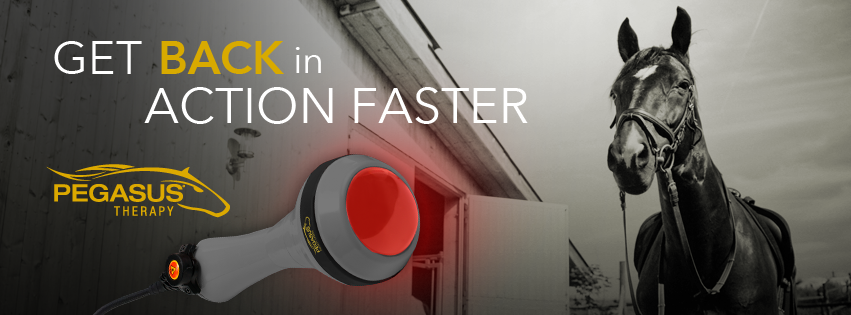Discover the Fantastic Benefits of Equine Therapy for Emotional Healing
Discover the Fantastic Benefits of Equine Therapy for Emotional Healing
Blog Article
Evaluating the Efficiency of Laser Treatment in Equine Treatment for Injury Recovery
The evaluation of laser therapy's effectiveness in equine injury rehabilitation pivots on numerous factors, consisting of recuperation time, discomfort reduction, and cells regrowth. Veterinarians often observe premium end results with laser treatment contrasted to traditional techniques, positioning it as an important aspect in equine care.
Understanding Laser Therapy
Laser treatment has actually become a pivotal device in vet medicine, particularly in the treatment of equine problems. Understood for its non-invasive nature and effectiveness, laser therapy entails the application of details wavelengths of light to promote tissue repair and lower inflammation. This restorative technique is significantly preferred for its ability to accelerate the recovery procedure in horses dealing with a selection of musculoskeletal injuries and persistent conditions.
The main device behind laser therapy is its capability to boost cellular functions. In addition, laser therapy promotes vasodilation, enhancing blood circulation and oxygen distribution to damaged tissues, therefore quickening recovery.
In equine medicine, laser therapy is specifically useful for problems such as tendonitis, osteo arthritis, and wound healing. The method is lauded for its pain-relieving homes, permitting steeds to regain movement and function a lot more swiftly. Veterinarians likewise appreciate its very little side results contrasted to various other therapy methods, making it a reputable and risk-free alternative for equine treatment.

Exactly How Laser Therapy Works

Upon absorption, these photons trigger a series of biochemical changes, enhancing mitochondrial function and causing enhanced adenosine triphosphate (ATP) manufacturing. This rise in ATP speeds up mobile metabolism, advertising tissue repair and regrowth. Furthermore, laser therapy regulates inflammatory actions by affecting cytokine degrees and minimizing oxidative tension, thus minimizing pain and swelling.
An additional significant facet of laser therapy is its duty in improving microcirculation. The therapy advertises vasodilation, improving blood circulation and oxygen delivery to broken tissues (Equine Therapy). This helps with the elimination of cellular particles and supports the expansion of fibroblasts and collagen synthesis, essential for injury healing
Professional Evidence
The efficacy of laser therapy in equine therapy has actually been confirmed recommended you read through numerous scientific researches, showcasing its healing possible throughout a range of conditions. A study conducted by Turner et al. (2012) demonstrated that equines treated with low-level laser therapy (LLLT) for tendon injuries displayed accelerated read here healing compared to those receiving conventional treatments.
Similarly, research study by Johnson and associates (2015) concentrated on equine muscular tissue injuries, exposing that laser therapy dramatically quickened muscular tissue fiber regeneration and lowered muscle mass stiffness. Clinical analyses have revealed that laser therapy can reduce persistent conditions such as osteo arthritis.
Veterinarian Insights

Vets additionally value the convenience of laser treatment. It can be employed for a vast array of conditions, from superficial wounds to deeper musculoskeletal injuries. Dr. Emily Brown highlights its utility in dealing with problems like tendonitis and osteo arthritis, where standard treatments frequently fail. She explains that laser therapy can be tailored to the details demands of each steed, ensuring optimum outcomes.
Moreover, veterinarians value the capacity to incorporate laser treatment with other treatment modalities. This multimodal approach can enhance total therapy effectiveness, offering an extensive solution for equine recovery. Such recommendations from seasoned professionals emphasize the expanding acceptance and application of laser therapy in equine medication.
Practical Factors To Consider
A check this crucial aspect of applying laser therapy in equine treatment entails comprehending the useful factors to consider that guarantee its efficacy and safety and security. It is critical to select the ideal laser gadget, as numerous types vary in wavelength, power, and penetration deepness. Vets should be fluent in these specifications to customize treatment procedures efficiently per injury type
Additionally, the frequency and duration of laser treatment sessions require cautious preparation to maximize restorative advantages while minimizing any type of possible adverse results. Consistent surveillance of the equine's feedback to therapy can direct necessary changes in the therapy program. Establishing a risk-free and regulated setting throughout treatments is likewise necessary to protect against unexpected exposure to laser exhausts, which can harm both the horse and the handler.
Training and qualification of employees administering laser therapy are paramount to make certain appropriate technique and to support safety and security criteria. Additionally, maintaining accurate records of each session, including laser settings and observed outcomes, is vital for assessing the general efficiency of the treatment and for making data-driven decisions.
Verdict
Laser treatment has emerged as an efficient method in equine injury recovery, using substantial advantages in recovery time, pain relief, and tissue recovery. For ideal results, continuous tracking and personalized therapy methods stay essential in leveraging the complete possibility of laser treatment in equine care.
Report this page